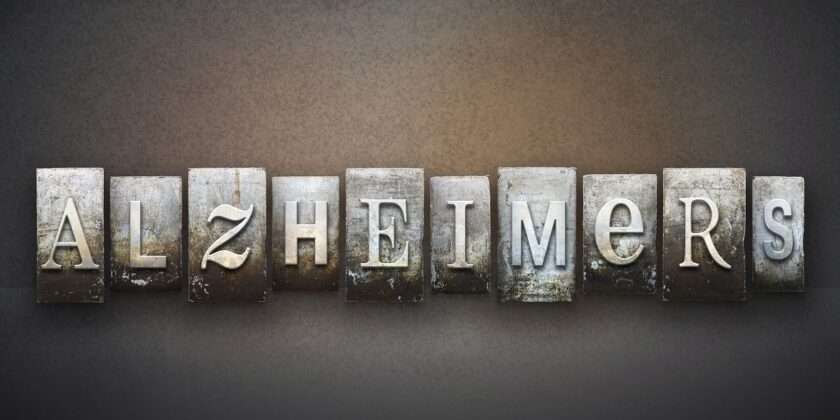Alzheimer’s disease is the 9th leading cause of death among African-Americans1 in 2014 according to the Centers for Disease Control and Prevention (CDC). Alzheimer’s disease claimed over 6,500 black lives in 2014. MedlinePlus states that Alzheimer’s disease (AD) is the most common form of dementia among older people.
Dementia2 is the name for a group of symptoms caused by disorders that affect the brain. It is not a particular disease. People with dementia may not be able to think well enough to do normal activities, such as getting dressed or eating. They may lose their ability to solve problems or control their emotions. Their personalities may change. They may become agitated or see things that are not there.
Jay Harold has worked with many people providing care for patients with Alzheimer’s disease. Six things to know about Alzheimer’s patients3 are:

By 2050, this number is projected to rise to 14 million, a nearly three-fold increase.
- In 2013, as many as 5 million Americans were living with Alzheimer’s disease.
- The number of people with the disease doubles every 5 years beyond age 65.
- Younger people may get Alzheimer’s disease, but it is less common.
- By 2050, this number is projected to rise to 14 million, a nearly three-fold increase.
- The symptoms of Alzheimer’s first appear after age 60 and the risk increases with age.
- Alzheimer’s is the 5th leading cause of death among adults aged 65–85 years.
Alzheimer’s disease is a significant challenge for any family. African-American families, in particular, are vulnerable. This is because African-American households are under enormous financial pressure. African-American’s $34,560 median household income in 2013 is significantly under the United States average. Families often provide care for Alzheimer’s patients for many years since the life expectancy of African-Americans in 2010 was 75.64 years according to a New York Times Report.
Caring for a person with Alzheimer’s disease at home can be demanding, and the burden can become crushing at times. Every day brings new challenges as the caregiver wrestles with changing levels of ability and a new way of life for the Alzheimer patient. As the disease progresses from mild to severe symptoms, people are living with Alzheimer’s disease often need more intensive care. Families and caregivers need help.
What is known about Alzheimer’s Disease?
Scientists do not yet fully understand what causes Alzheimer’s disease. There probably is not one single cause, but several factors that affect each person differently.
- Age is the best-known risk factor for Alzheimer’s disease.
- Family history—researchers believe that genetics may play a role in developing Alzheimer’s disease.
- Changes in the brain can begin years before the first symptoms appear.
- Researchers are studying whether education, diet, and environment play a role in developing Alzheimer’s disease.
- Scientists are finding more evidence that some of the risk factors for heart disease and stroke, such as high blood pressure, high cholesterol, and low levels of the vitamin folate may also increase the risk of Alzheimer’s disease.
- The evidence is also growing for physical, mental, and social activities as protective factors against Alzheimer’s disease.
How is Alzheimer’s Disease Treated?
Jay Harold realizes that the sometimes severe behavioral problems of Alzheimer’s patients can be overwhelming. Drug medications are used with non-drug options to help Alzheimer patients. Alzheimer’s disease is complex, and it is unlikely that any one drug or other intervention can successfully manage it. Current approaches focus on helping people maintain mental function, manage behavioral symptoms, and slow or delay the symptoms of disease5.
Several medications are approved by the U.S. Food and Drug Administration to treat symptoms of Alzheimer’s. Donepezil (Aricept®), rivastigmine (Exelon®), and galantamine (Razadyne®) are used to treat mild to moderate Alzheimer’s (donepezil can be used for severe Alzheimer’s as well). Memantine (Namenda®), is used to treat moderate to severe Alzheimer’s.

Age is the best-known risk factor for Alzheimer’s disease.
These drugs work by regulating neurotransmitters, the brain chemicals that transmit messages between neurons. They may help maintain thinking, memory, and communication skills and help with particular behavioral problems. However, these drugs don’t change the underlying disease process. They are effective for some but not all people and may help only for a limited time.
All drug medications can have adverse drug effects. Jay Harold has a post, “Drug Side Effects are a Health Issue,” that talks about the side effects of medications and how to manage them.
Support for Caregivers
About 15 million people care for a loved one with Alzheimer’s in the United States. Knowing what to expect and preparing for the challenges, can help people with Alzheimer’s live better with the disease and also stay in their homes longer.
Many government healthcare organizations provide useful tools and information for caregivers of Alzheimer’s patients. Alzheimers. Gov6 has a web page listing common challenges and coping strategies. The website also has links to other organizations with additional information.
Caregivers love the Alzheimer’s patient. This quote by David Ogden Stiers summarizes everything that caregivers do. “Family means no one gets left behind or forgotten.”
Black Americans are often the forgotten faces of Alzheimer’s Disease. We must create more awareness of this deadly disease in our community.
Enjoyed this post? Share it and read more here. Jay Harold has put together a Resource page that you may find useful when trying to improve your health and wealth.
Please take this advice of Muhammad Ali and give back to others. “Service to others is the rent you pay for your room here on earth.” ~ Muhammad Ali.

Bibliography
- https://www.cdc.gov/nchs/data/nvsr/nvsr65/nvsr65_05.pdf pg 31
- https://medlineplus.gov/ency/article/000739.htm
- http://www.cdc.gov/aging/aginginfo/alzheimers.ht
- https://www.nytimes.com/2016/05/09/health/blacks-see-gains-in-life-expectancy.html?_r=0
- https://www.nia.nih.gov/alzheimers/topics/treatment
- http://alzheimers.gov/coping.html




